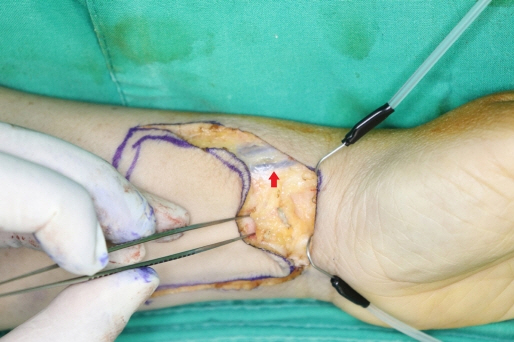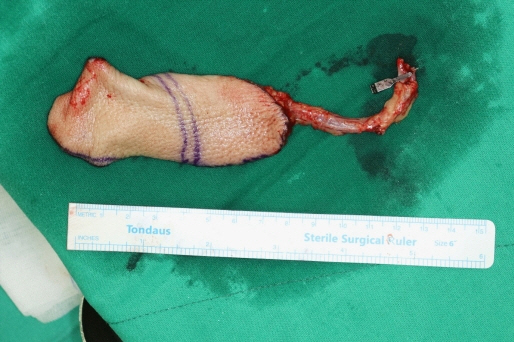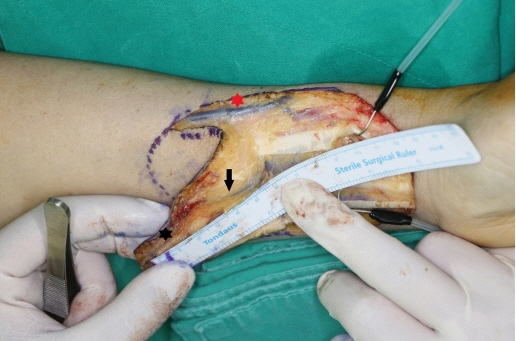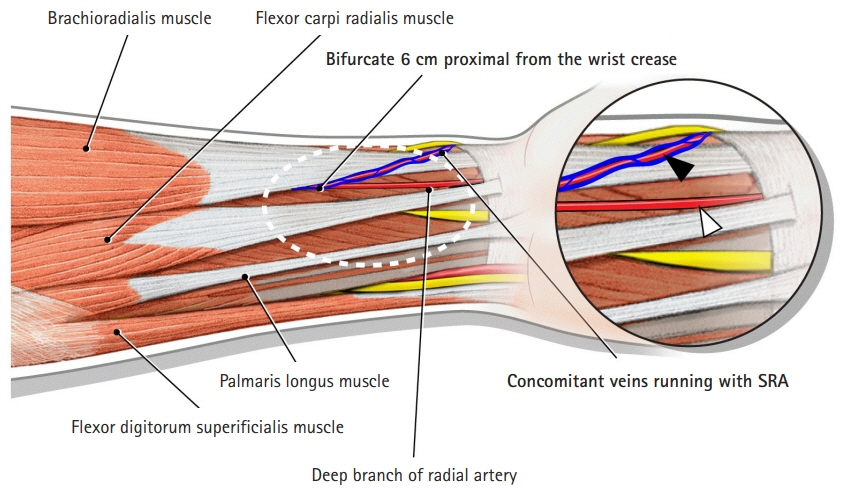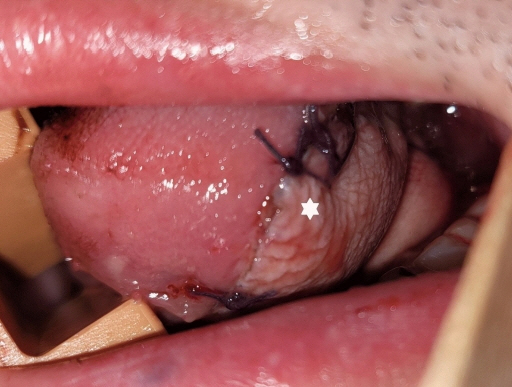Arch Hand Microsurg.
2022 Sep;27(3):270-273. 10.12790/ahm.22.0017.
Alteration of a radial forearm flap to adjust to the superficial radial artery: a case report
- Affiliations
-
- 1Department of Plastic and Reconstructive Surgery, Severance Hospital, Yonsei University College of Medicine, Seoul, Korea
- KMID: 2532745
- DOI: http://doi.org/10.12790/ahm.22.0017
Abstract
- Aberrant branches of the radial artery at the level of the forearm have rarely been reported. Preoperative workups to identify aberrant branches of this type have also seldom been performed. However, surgeons elevating a radial artery-based flap should consider the possibility of aberrant arterial branching. Otherwise, the circulation of both the flap and hand may be endangered. We present a case of an anomalous radial artery branch that resulted in an intraoperative alteration of the flap design. A novel technique was used to preserve the circulation of the entire flap, and the patient recovered with adequate healing of the flap and donor areas. No hand function deficits or subjective complaints were noted. In conclusion, surgeons should be aware of the superficial radial artery or other aberrant branches of the radial artery that may be located in various locations during radial artery-related flap elevation.
Keyword
Figure
Reference
-
References
1. Mccormack LJ, Cauldwell EW, Anson BJ. Brachial and antebrachial arterial patterns; a study of 750 extremities. Surg Gynecol Obstet. 1953; 96:43–54.2. Adachi B. Anatomie der Japaner 1: das arteriensystem der Japaner. Kyoto: Verlag der Kaiserlich-Japanischen Universität zu Kyoto;1928.3. Sachs M. [The arteria radialis superficialis. An unusual variation of the arteria radialis of man and its phylogenetic significance]. Acta Anat (Basel). 1987; 128:110–23. In German.4. Martín-Granizo R, Gómez F, Sánchez-Cuéllar A. An unusual anomaly of the radial artery with potential significance to the forearm free flap. Case report. J Craniomaxillofac Surg. 2002; 30:189–91.5. Acarturk TO, Newton ED. Aberrant branch of the radial artery encountered during elevation of the radial forearm free flap. J Reconstr Microsurg. 2004; 20:611–4.6. Otsuka T, Terauchi M. An anomaly of the radial artery--relevance for the forearm flap. Br J Plast Surg. 1991; 44:390–1.7. Vadodaria S, Brotherston TM, Page RE. Best use of anomaly of radial artery. Br J Plast Surg. 2001; 54:180–1.8. Bhatt V, Green J, Grew N. Dealing with aberrant vessels in radial forearm flaps - report of a case and review of literature. J Craniomaxillofac Surg. 2009; 37:87–90.9. Beale EW, Behnam A. Injection injury of an aberrant superficial radial artery requiring surgical intervention. J Hand Microsurg. 2012; 4:39–42.10. Hedén P, Gylbert L. Anomaly of the radial artery encountered during elevation of the radial forearm flap. J Reconstr Microsurg. 1990; 6:139–41.
- Full Text Links
- Actions
-
Cited
- CITED
-
- Close
- Share
- Similar articles
-
- Proximal bifurcation of the superficial palmar branch of the radial artery and anomalous superficial course of the distal radial artery: a case report
- Superficial Radial Neuropathy due to Anatomic Variation: A Case Report
- Unusual anomaly of the radial artery encountered during the elevation of a radial forearm free flap: a case report
- Radial forearm free flap in a patient with an unusual radial artery variation: a case report
- Repair of radial forearm free flap donor defect using ulnar forearm flap

